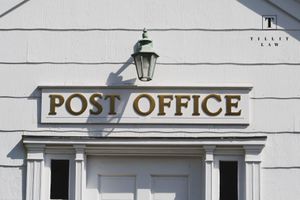Res judicata provides that when a final judgment has been entered on the merits of a case, it is a finality as to the claim or demand in controversy. Therefore, in federal contract claims litigation, contractors are typically required to bring all their claims arising out of the same contract in the same litigation. The doctrine of res judicata, which encompasses the related doctrines of issue and claim preclusion, may apply when a contractor litigates a matter at a Board of Contract Appeals and later brings a suit with the same or similar set of operative facts at the Court of Federal Claims (COFC). Issue preclusion prohibits a losing party from relitigating already litigated issues. Meanwhile, claim preclusion prevents litigation of matters that have not been litigated but should have been raised in an earlier litigation. Therefore, the doctrine of claim preclusion operates as an affirmative defense, warranting the dismissal of matters that should have been raised in earlier litigation with the same or similar set of operative facts.
In Avant Assessment, LLC v. U.S., 159 Fed. Cl. 632 (2022), the COFC dismissed parts of the complaint based on the doctrine of claim preclusion, finding that the plaintiff should have raised certain arguments during its prior litigation at the Armed Services Board of Contract Appeals (ASBCA). The Army issued the contracts underlying the claims for the acquisition of foreign language testing materials to gauge the proficiency of military linguists. Under the contract, the government retained intellectual property rights in both accepted and rejected items as the contracts provided the government sole ownership and exclusive rights to the testing materials. Army had initially terminated the contracts for default, but the default terminations were later converted into convenience terminations as a result of the contractor’s successful appeals at the ASBCA. Following the successful convenience conversions, the contractor submitted termination settlement proposals to the contracting officer (CO), which were denied. After the CO’s denial, the contractor again appealed the CO’s adverse decision to the ASBCA.
Notably, during the discovery phase in the ASBCA litigation, the contractor learned that the government had not only retained the rejected testing materials but also “used” them by transferring the rejected items to a third party. Therefore, the contractor demanded payment for the rejected test materials in the ASBCA litigation. The contractor alleged that the Army had constructively accepted the rejected testing materials by retaining and using them after rejection. Alternatively, the contractor argued that the Army improperly rejected the testing materials. The ASBCA dismissed a large portion of the contractor’s claim for lack of jurisdiction since the contractor’s constructive acceptance claims were not first presented to the CO, as is required under the Contract Disputes Act (CDA). Importantly, for the remainder of the termination for convenience claim, the ASBCA entered judgment, which became final. The contractor then submitted the dismissed portion of its claims to the CO for a final decision, which was again denied. However, this time, instead of appealing the CO’s adverse decision at the ASBCA, the contractor appealed the CO’s final decision at the COFC.
In Counts I-III of its COFC complaint, the contractor sought damages relating to the government’s convenience termination of its contracts, including the improper rejection claims raised for the first time before the COFC. In Counts IV-VI, the contractor sought damages under Uniform Commercial Code (UCC) § 2-606(1) based on the government’s implied acceptance of items that the government initially rejected but subsequently used without paying the contractor. In Count VII, the contractor sought damages under the theory of equitable estoppel. In Count VIII, the contractor sought declaratory judgment regarding the work it performed before it was notified of the termination. Therefore, Counts VII and VIII related to the contractor’s termination for convenience claims. In response to the complaint, the government pointed to the Board’s final judgment, arguing that litigation to determine compensation for the convenience termination had already concluded at the ASBCA. Consequently, the government took the position that the contractor’s attempts to relitigate the matter had to fail as the doctrine of claim preclusion barred its claims.
Termination for Convenience Claims
The Court began its analysis by noting that for claim preclusion to apply, the government must show that:
- The same parties litigated in a previous suit.
- The adjudicative forum entered a final judgment on the merits of that previous suit.
- The latter claim is based on the same transactional facts as the first claim, such that the latter claim should have been litigated in the previous case.
There was no dispute that the same parties litigated before the ASBCA as in the present suit. It was also clear that the ASBCA litigation resulted in a final judgment. Finally, the contractor’s claims relevant to termination for convenience (that is, Counts I-III, VII, and VIII) were determined to be based on the same set of transactional facts as the ASBCA litigation – such that they should been raised before the ASBCA in the prior litigation. Therefore, the COFC concluded that the doctrine of claim preclusion barred the contractor’s termination for convenience claims.
Additionally, the COFC determined that it was immaterial for the applicability of the doctrine of claim preclusion that ASBCA had not entered judgment on the merits of some of the arguments related to the termination for convenience. The Court explained that an adjudicative forum’s dismissal for lack of subject matter jurisdiction in the previous action does not typically support claim preclusion in subsequent actions. However, in this case, the contractor’s equitable estoppel and declaratory judgment claims (Counts VII and VIII, respectively) were barred because the contractor should have raised these arguments in the prior litigation. The Court explained that the jurisdictional defect before the ASBCA concerning the contractor’s equitable estoppel and declaratory judgment claims was solely due to the contractor’s failure to submit all its claims to the CO simultaneously. Since the contractor did not raise all its arguments relevant to the convenience termination when submitting its initial settlement termination proposal to the CO, the COFC concluded that the contractor was now precluded from raising those arguments on appeal at the COFC because the ASBCA litigation had ended. Consequently, citing the doctrine of claim preclusion, the Court dismissed all counts in the contractor’s complaint relevant to termination for convenience.
UCC Claims
Unlike the termination for convenience claims, the COFC held that the doctrine of claim preclusion did not bar the contractor’s UCC claims for two reasons. Firstly, the UCC claims required the Court to focus on a different set of facts unrelated to the convenience termination. Secondly, the contractor could not have included its UCC arguments in its settlement proposals to the CO because it could not have known the pertinent facts surrounding the government’s post-rejection use conduct at the time it submitted the settlement proposals.
Specifically, the contractor had alleged in counts IV-VI of its COFC complaint that under UCC § 2-606, it was entitled to recover the value of the test items the government rejected, retained, and used. The Court ruled that the contractor could proceed with the UCC counts of its COFC complaint because the contractor only found out about the government’s post-rejection use of the testing materials during the discovery stage of the ASBCA litigation. The Court also noted that the contractor requested a stay in proceedings during the ASBCA litigation to correct jurisdictional issues. However, the ASBCA went ahead with the case before it. Therefore, the COFC agreed with the contractor that it could not have included its UCC claims in the prior litigation because the essential facts to establish the claim were within the government’s exclusive control. Consequently, the Court decided that the doctrine of claim preclusion did not bar the contractor’s UCC claims.
The doctrine of claim preclusion in federal contracts litigation ensures that the contractor has one, and only one, full and fair opportunity to litigate its matter. It prevents contractors from submitting some, but not all, of their claims to the CO at the same time to strategically create or limit CDA jurisdiction over their claims. Therefore, contractors should be mindful of the applicability of res judicata when engaged in protracted litigation involving the same or similar set of operative facts spanning several years and across multiple adjudicative forums. Claims should be presented in their entirety to the CO as early as possible, and any appeals should be filed within the timeframes established under the CDA. Depending on the specific circumstances, if new facts giving rise to additional claims are uncovered during appeals litigation, contractors should request a stay in proceedings to meet the presentment requirement and resolve any jurisdictional issues to ensure all related matters are litigated together.
This Federal Contract Claims Insight is provided as a general summary of the applicable law in the practice area and does not constitute legal advice. Contractors wishing to learn more are encouraged to consult the TILLIT LAW PLLC Client Portal or Contact Us to determine how the law would apply in a specific situation.





